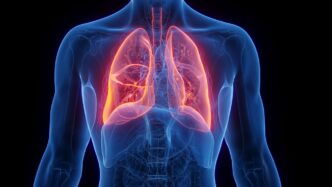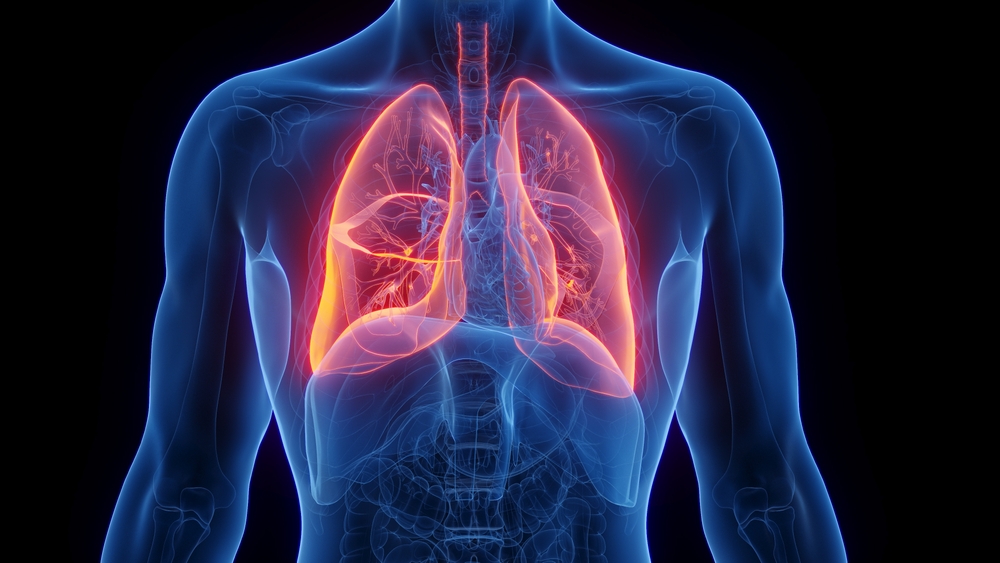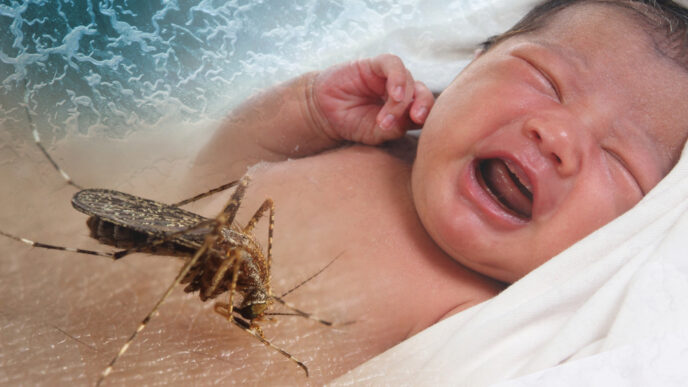YOU’RE STILL BREATHING
“You never know how strong you are until being strong is the only choice you have.” – Cayla Mills
Being diagnosed with cancer is always a shock. Take your time to grief, and to make peace with the diagnosis. When you are ready to move ahead and face treatment, please take comfort in the fact that we know more about NSCLC today than we did a few decades ago, and this knowledge allows patients to live longer than before, to embrace life as fully and richly as they can. With proper treatment and support, you may have more time than you think, to live, laugh and love a little longer.
SO THIS IS NSCLC.
Even if you feel that this is the last thing you wish to do at the moment, learning about NSCLC is an essential step in moving forward. You will be able to communicate better with your healthcare team, and you will also be better prepared to make informed decisions about your treatment.
You can find out more by consulting your doctor or reading books and websites by specialists and cancer survivors. You can also refer to our Special Report, A Cancer in the Lungs, in our November 2015 issue.
THERE ARE FOUR STAGES OF NSCLC.
- The cancer has not grown into nearby tissues or spread to other places outside the lungs.
- The tumour has not spread outside the lungs; no cancer cells found in any lymph nodes.
- The tumour is larger than in Stage I, and in some cases, may have spread to nearby lymph nodes or the chest wall.
- The cancer has reached a complex stage; the tumour is difficult to remove, and the cancer may have spread to lymph nodes at the centre of the chest or into nearby lung structures.
- The cancer has spread to more than one area – to the other lung, the heart or even to distant parts of the body such as the brain, bones, liver and adrenal glands.
If you are diagnosed with NSCLC, further tests will be carried out to determine several important things about your cancer: where your cancer is located, whether it has spread and, if yes, to which part(s) of the body, as well as the stage of the cancer. Knowing the stage is important because it determines the kind of treatment you receive – some treatment options work better at earlier stages of the cancer, while other treatment options are more suitable for NSCLC that is at a more advanced stage.
We will discuss diagnosis and treatment in more detail in the next section.
WAITING TO EXHALE
“Every morning at 5:30, as the alarm clock goes off, and my dead body awakes, my wife asleep next to me, I think again to myself: I can’t go on. And a minute later, I am in my scrubs, heading to the operating room, alive: I’ll go on.”– Dr Paul Kalanithi, When Breath Becomes Air
Dr Ho Gwo Fuang Associate Professor & Clinical Oncologist, University Malaya Medical Centre
Associate Professor Dr Ho Gwo Fuang is no stranger to cancer. A clinical oncologist and radiotherapist currently affiliated with University Malaya Medical Centre, he consults and treats cancer patients on a daily basis. Additionally, he has written books and papers on the subject, and he is also a mentor who played a big role in the education and training of many of today’s oncologists in the country.
On NSCLC, he explains that there is no simple criteria when it comes to treatment. “Treatment options are determined on a case-by-case basis,” he says, “based on the condition of the patient as well as the stage of the disease.”
THE PATIENT.
Is the patient physically fit to undergo treatment? If the patient is confined to a bed or suffers from infections, their treatment options are generally more limited. How much weight has the patient lost? Are the heart and lungs still functioning properly? Does the patient suffer from other health conditions at the same time (co-morbidities), for example diabetes?
THE DISEASE.
Is the cancer limited to one location or has it spread to surrounding tissues or even to body parts further away? The molecular structure of the tumour will also be considered.
Therefore, the first thing on the to-do list is a thorough medical examination as well as investigation of your medical history. You may have to undergo physical examination, routine laboratory evaluations (such as blood and urine tests) and medical scans (X-ray, chest computed tomography scan, etc).
“HOW WILL MY DOCTOR HELP ME?”
In Malaysia, the following treatment options are available, depending on the stage of the cancer and the patient’s health profile.
- Surgery. If the tumour is limited to one location, and has not spread to neighbouring tissues, surgery may be performed to remove the tumour.
- Chemotherapy and radiation therapy to kill the cancer cells in the body.
- Targeted therapy. This involves the use of drugs to target specifically the cells that are causing the cancer, while minimising damage to other non-cancer cells.
- Immunotherapy which is still undergoing clinical trial at the moment.
EARLY STAGE NSCLC (STAGES 0, I, II)
Surgery may be performed to remove the tumour. Chemotherapy and radiation therapy may also be prescribed to kill any remaining cancer in the body.
ADVANCED STAGE NSCLC (STAGES III AND IV)
When the cancer reaches an advanced stage, the cancer cells have spread to surrounding tissues as well as to distant parts of the body (brain, bone, heart, etc). As a result, treatments will help you live longer and relieve symptoms, but they often do not cure you.
Treatment options depend on the extent of the spread of cancer, the number of tumours present in your body and your health status. The more advanced your cancer is, the more types of treatment you may be placed under, says Dr Ho.
Treatment options for advanced stage NSCLC include chemotherapy, radiation therapy, targeted therapy and immunotherapy.
“TELL ME MORE ABOUT MY OPTIONS.”
Let’s take a look at each treatment option in more detail.
SURGERY.
Surgery is usually an option for early stage NSCLC, when the tumour has not yet spread to other parts of the body. Dr Ho explains that the tumour may be removed in several possible ways:
- Removal of a small piece of the lung (sleeve resection, segmentectomy, or wedge resection) – usually for small tumours, or when removal of the entire lobe is not possible due to poor lung function. This is not usually recommended due to the higher chance of recurrence.
- Removal of the affected lung lobe (lobectomy).
- Removal of the entire affected lung (pneumonectomy). This is usually avoided if possible, due to higher complication rate.
In some cases, you may have to undergo chemotherapy to shrink the tumour size first before it can be operated on.
A number of lymph nodes within or near your lung will also be removed. They will be sent to a pathology lab to determine whether the cancer cells have spread to them. The removed lung lobe (or tissue) will also be examined for cancer cells at the edges of the specimen. If cancer cells are found there, it is likely that there may be some cancer still left behind in the lungs, and you will be given appropriate follow-up treatment.
RADIATION THERAPY.
Your tumour cells will be exposed to radioactive rays that will kill or control the growth of these cells. Dr Ho explains that there are two types of such therapy:
- Conventional radiation therapy sends low doses of radioactive rays over a course of several weeks. You will be undergoing daily treatment during this period of time.
- Stereotactic body radiation therapy (SBRT) sends a higher dose of radioactive rays up to five doses in total, to kill the cancer cells quickly while minimising damage to healthy cells. SBRT is usually given to patients with small and well-defined tumour, as an alternative to surgery.
Unfortunately, radiation therapy cannot tell apart cancer cells from healthy ones, so some patients may experience side effects such as:
- Head and neck area: dry mouth, sore mouth and gums, stiffness
- Respiratory system: shortness of breath, cough, radiation pneumonitis (inflammation of the lungs), radiation fibrosis (permanent scarring of the lungs)
- Digestive system: difficulty in swallowing, loss of appetite, nausea
- Physical appearance: hair loss, changes in skin appearance
Care would be taken by your radiation oncologist to minimise side effects. If you suffer from side effects, alert your healthcare team. They can take measures to reduce the severity of these side effects.
CHEMOTHERAPY.
Dr Ho explains that chemotherapy involves the use of cytotoxic drugs, which are drugs that kill cancer cells. You may be given a combination of several drugs to improve your treatment response.
Chemotherapy is usually used when the cancer has spread, or when your healthcare team suspects that there are cancer cells still present in your body even after surgery.
Some chemotherapy drugs are delivered via an intravenous line (a “drip”), while others can be taken orally. They have to be taken based on specific administration schedules, to give these drugs enough time to work their effects on your body as well as to give your body time to recover from these effects. Depending on the drug, the schedule can be weekly or monthly. Your healthcare team will advise you more on this.
Side effects. Along with its benefits, chemotherapy is also infamous for its side effects. This is because chemotherapy drugs kill cells that undergo fast division, regardless of whether they are cancer cells or healthy ones. As a result, certain healthy cells in your body will also experience the effects of chemotherapy.
Side effects of chemotherapy include lack of energy, lack of appetite, nausea, vomiting, lack of taste, constipation, mouth ulcers, bloatedness, indigestion, dehydration and kidney damage. It is therefore important to consume enough fluids during the course of chemotherapy to keep the body well hydrated.
Additionally, if the bone marrow cells which produce red and white blood cells are damaged, your body may experience a reduction in these cells. This gives rise to a condition called myelosuppression.
Alert your healthcare team of your side effects. They would adjust the dose and carry out other measures to reduce the severity of these side effects.
It is important to seek medical help immediately if you develop high fever (>38oC) during chemotherapy.
TARGETED THERAPY.
This involves newer drugs that are developed as a result of research on how NSCLC comes to be. These drugs specifically target the cells involved in giving rise to NSCLC. Thus, they often cause less severe side effects when compared to chemotherapy drugs.
Dr Ho points out that targeted therapy is often given to patients with advanced stage NSCLC. Targeted therapy is also an option to consider when the patient no longer responds positively to chemotherapy.
To illustrate how targeted therapy works, let’s use EGFR positive NSCLC patients as an example.
EGFR TARGETED THERAPY
“About 40% of patients are EGFR positive,” Dr Ho says. EGFR stands for epidermal growth factor receptor, a protein structure in the cell that is involved in cell proliferation. Research showed that mutations in the EGFR gene – most commonly within the segments or exons 18 to 21 – can give rise to NSCLC. People with EGFR mutations are called EGFR positive.
Dr Ho further explains that, because of the role EGFR mutations play in causing NSCLC, there are drugs created to affect only the cells with these mutations in the body – that is, the cancer cells. There are three drugs available currently:
- Gefitinib – the first in the market.
- Erlotinib.
- Afatinib – the new kid on the block.
These drugs work by disrupting the function of EGFR in the cancer cells, therefore preventing them from increasing in number and, thus, keeping the tumour in check. They can be administered to the patient without any need for chemotherapy, thus reducing the amount of side effects experienced by the patient and significantly improving the quality of life in the process.
Geftinib and erlotinib have been used to treat EGFR positive NSCLC patients for over a decade. Afatinib was approved in 2013 by the US Food and Drug Administration (FDA) for “first-line treatment of patients with metastatic non-small cell lung cancer (NSCLC) whose tumours have epidermal growth factor receptor (EGFR) exon 19 deletions or exon 21 (L858R) substitution mutations”, so it can be considered the new kid on the block.[1]
Interestingly enough, Dr Ho points to a recent study, the LUX-Lung 3 trial, which suggests that afatinib can be quite effective in extending and improving the quality of life of a patient, when compared to those who are on the chemotherapy drug cisplatin and pemetrexed. Coupled to its good response rate (about 60% of patients respond well to it, according to Dr Ho), afatinib looks to be a viable option for NSCLC targeted therapy.
Side effects. Targeted therapy has its side effects as well. Skin problems (dryness, itchiness, pimples etc), nail changes and diarrhoea are common side effects of EGFR targeted therapy. Let your healthcare team know if you suffer from any side effects.
IMMUNOTHERAPY
Dr Ho explains that immunotherapy is currently available as clinical trial for NSCLC patients with high tumour expression of a substance called PD-L1. Patients without PD-L1 may not benefit as much from immunotherapy, although research is ongoing, he adds.
THE COST FACTOR
An unavoidable truth about lung cancer treatment is that it can be expensive. Don’t give up hope, though! Several medical establishments and hospitals may offer financial assistance. You can also apply for financial aid from organisations such as the National Cancer Council (MAKNA, www.makna.org).
BREATHING HOPE INTO CANCER
Dr Christina Ng Van Tze Consultant Medical Oncologist, Pantai Hospital Kuala Lumpur
We learned about the technical aspects of lung cancer in the earlier pages. Now, we shine the spotlight on the emotional aspects of healing. Consultant Medical Oncologist Dr Christina Ng offers her valuable insight on the matter.
When mother of two Kathy Ball first found out that she had lung cancer, she was surprised to say the least. Recalling the day when her doctor informed her of the diagnosis, she says, “I was shocked. I never smoked in my life so to be told I had lung cancer was incomprehensible.” Devastation soon set in. “I kept on thinking ‘I’m dying. My daughters will be left alone.’ It was an emotional time for my family and I.”
As much as she wanted to keep the news hidden from her children, Kathy ultimately let them in on her diagnosis. “It was a blur of emotion; telling them was one of the most difficult things I had to do,” she says. Thankfully, her daughters took the news well.
“I remember being in the hospital, waiting for my surgery with my daughters by my side. I was petrified that I wouldn’t make it through the operation. But hours later, I woke up in the intensive care unit still very much alive,” Kathy says. She couldn’t be more relieved but things were about to get tougher.
“Post-surgery, I was unable to do anything by myself. Simple tasks like bathing and dressing were nearly impossible. Things took a turn for the worse when the surgeon informed me that not all of my cancer cells were removed so I had to undergo postoperative radiotherapy for 5 weeks.” As tough as things were, she eventually triumphed over the odds. “It wasn’t easy but I got through it. It was lovely to finally return home after treatment.”
These days, Kathy’s cancer is in remission and she is feeling better than she has ever been. “It’s been 3 years since I finished treatment and I feel great. I couldn’t have done it without support from my daughters and friends. My eldest even gave up her job to care for me full-time. I’m happy to be alive,” she says.
THE FEARFUL “C” WORD
Many can relate to Kathy’s journey with lung cancer. “Hearing your doctor utter the words “You have cancer” can be absolutely frightening. Each person’s reason for fear may be different. It can be a fear of succumbing to the disease, a lack of finances for treatment, the absence of social support or the significant adjustments the person and their family have to make. As a result, cancer can take a toll on someone’s physical health as well as emotional wellbeing,” says Consultant Medical Oncologist Dr Christina Ng.
CHANGES WILL COME
Cancer can bring significant changes to one’s life. Dr Ng explains, “Surgery may sometimes leave scars. Cancer treatment may cause some to gain or lose weight. Others may experience hair loss. Some cancer patients may have to give up certain activities they once enjoyed as they may tire more easily.” Dr Ng also adds that you may not necessarily experience all of these changes when you undergo treatment, as different people react differently to cancer treatment.
“Cancer treatment can be challenging, and it is only natural that some cancer patients feel insecure, unattractive or discouraged by physical changes to their bodies. Feeling unattractive or discouraged is common. All of these negative emotions can lead to a fear of rejection and a reluctance for intimacy which in turn, may discourage the people who love and support the patient.” But she assures that there is always hope.
THE POWER OF TWO
“Remember, while your journey with cancer can be challenging, it can also be hard on your loved ones especially your partner. In some cases, the partners are the ones experiencing more distress than the patients themselves. Your partner may be faced with the sudden shift of family responsibilities. They may also be as concerned about intimacy as you are,” says Dr Ng.
“This is why it’s crucial to be honest with your partner. Share your insecurities with each other. Also remember, intimacy doesn’t have to be about sex. Simple acts like hugging can create a sense of connectedness. This can ease your mutual feelings of isolation and bring you both closer. A partner’s support can do wonders,” she says encouragingly.
MANAGING THE COST OF TREATMENT
For some patient and their families, the cost of treatment may go above their means. If you are impacted by the cost of treatment, Dr Ng assures that proper planning can help you to manage treatment expenses more efficiently.
Some helpful tips include:
- Discuss treatment costs with your doctor and the rest of your healthcare team.
- Have someone keep track of your medical expenses as you may not have the energy to deal with your illness and finances at the same time.
- Learn as much as you can about your cancer and available treatment options. Publications like Dr Ng’s My Journal offer detailed information on medical tests, treatments, how to organise a treatment diary amongst other things. My Journal can be purchased from Sunway Medical Centre, or by calling EMPOWERED, The Cancer Advocacy Society of Malaysia at 03 7726 8806
- Be aware that your medical expenses are likely to cover various aspects like lab tests, specialist visits, hospitalisation and homecare.
Some cost-related questions you should ask include:
- – How much does your total treatment cost?
- – How much of your treatment cost will be covered by your insurance?
- – Will your insurance company require a pre-approval of your treatment plan?
- – Are there less expensive (but equally effective) treatment alternatives?
- – Are you eligible for patient assistance programs?
LIFE AFTER CANCER
When all things have been said and done, one question remains – is there life after cancer? Dr Ng says, “Yes, definitely. But even after treatment is over and their cancer is in remission, many patients are still affected by the experience and the fear of recurrence.” On how to cope, she advises, “Living with uncertainty is never easy so remind yourself that anxiety is a part of your survivorship. This worry will gradually diminish over time.”
Some ways you can manage post-treatment stress include:
- Acknowledge your worry. Sharing your fears with a good friend or even a professional counselor can put things in perspective. Non-profit cancer organisations like EMPOWERED (www.empowered.org.my) have trained volunteers who offer psychological support, companionship and insight to patients and their caregivers.
- Stay connected with fellow cancer survivors. Join a support group if possible. The group experience often creates a sense of belonging which helps you feel more understood and less isolated.
- Have regular check-ups. Check-ups help you monitor your condition and give you a firm sense of control.
- Healthy habits. Eating healthy and getting adequate rest can help you feel better physically and emotionally.
- Be well-informed. Some cancer survivors are constantly worried about recurrence. There is no certainty of cancer recurrence, so do not let yourself be crippled by unnecessary fears! Talk to your doctor or a counselor about your fears, and their assurances will help you manage your anxiety.
ONE DAY AT A TIME
Dr Ng concludes, “You may sometimes get frustrated as your cancer journey would often require you to adapt to a different lifestyle, one that you need time to get used to. So, know your limits and redefine your expectations – you are human, after all. I often encourage my patients to focus on the short-term goals of treatment. Take one day at a time. In time, you can learn to thrive – not merely survive – with cancer.”
Reference:
Roy Castle Lung Cancer Foundation. Available at www.roycastle.org
[1] US Food and Drug Administration (FDA). Afatinib. Retrieved on January 14, 2016 from http://www.fda.gov/Drugs/InformationOnDrugs/ApprovedDrugs/ucm360574.htm
[1] St John, T. M. (2003). With every breath: a lung cancer guidebook (pp 53-55). Vancouver, WA: Author.
[2] St John, T. M. (2003). With every breath: a lung cancer guidebook (p. 49). Vancouver, WA: Author.














